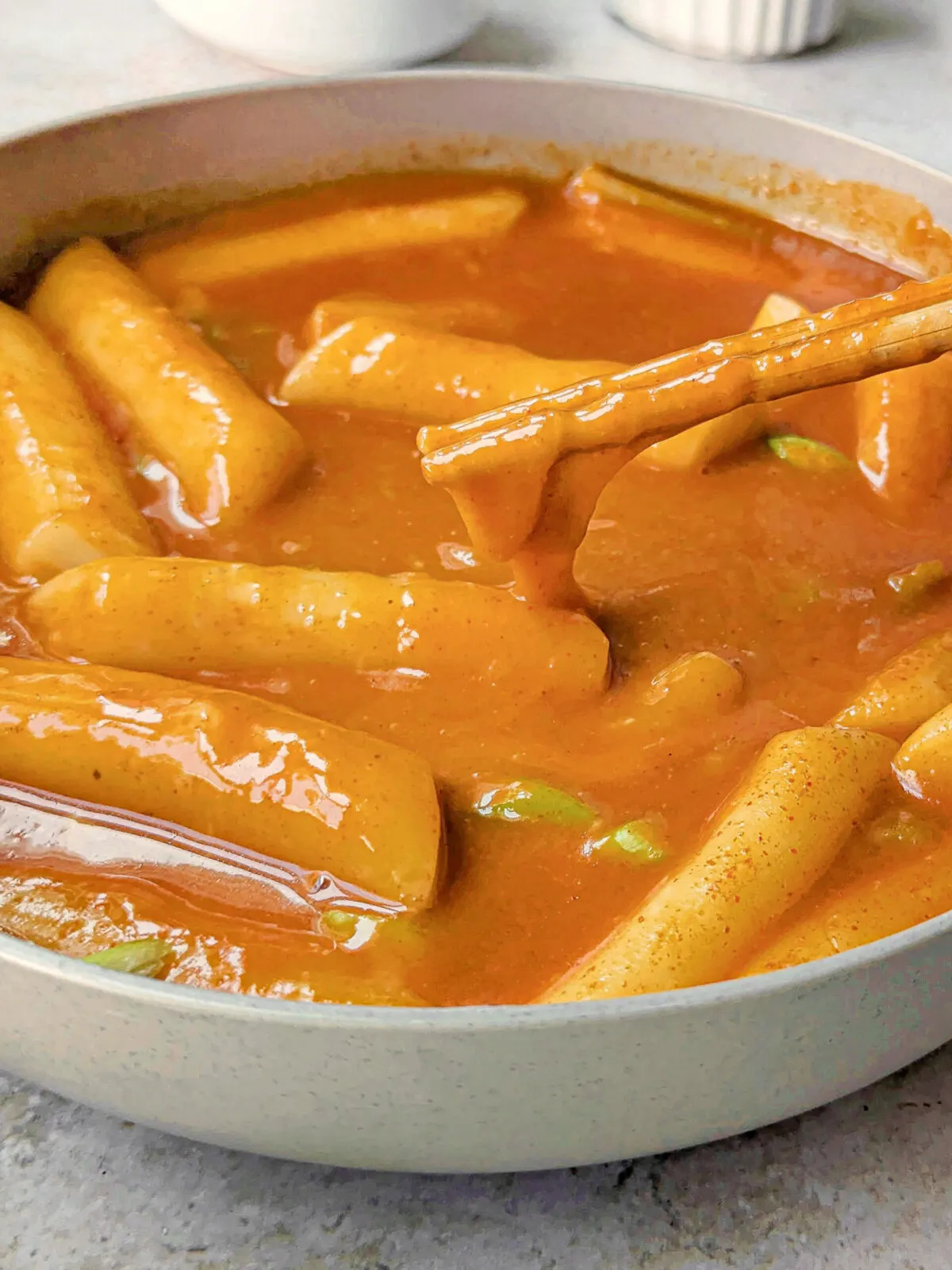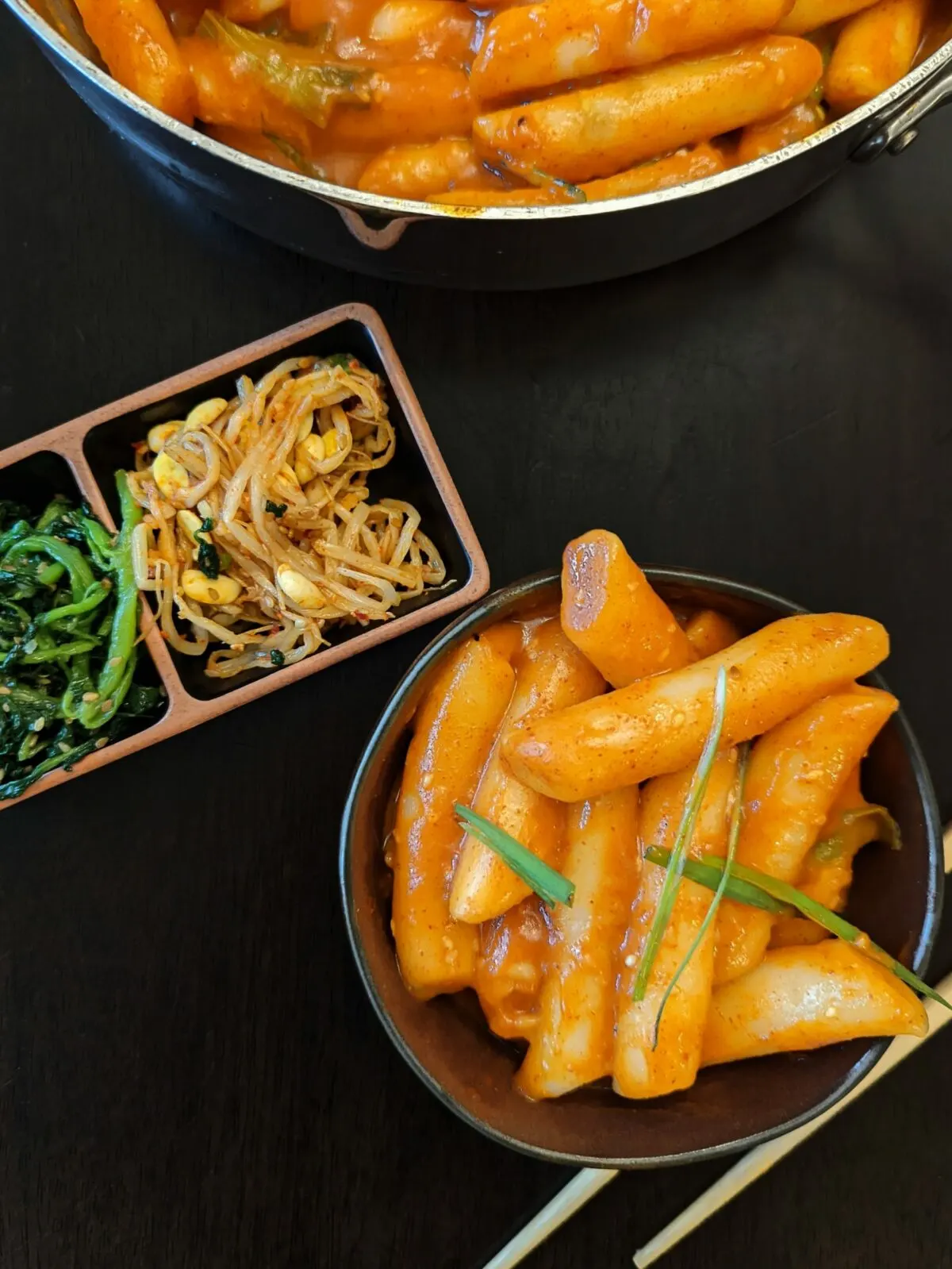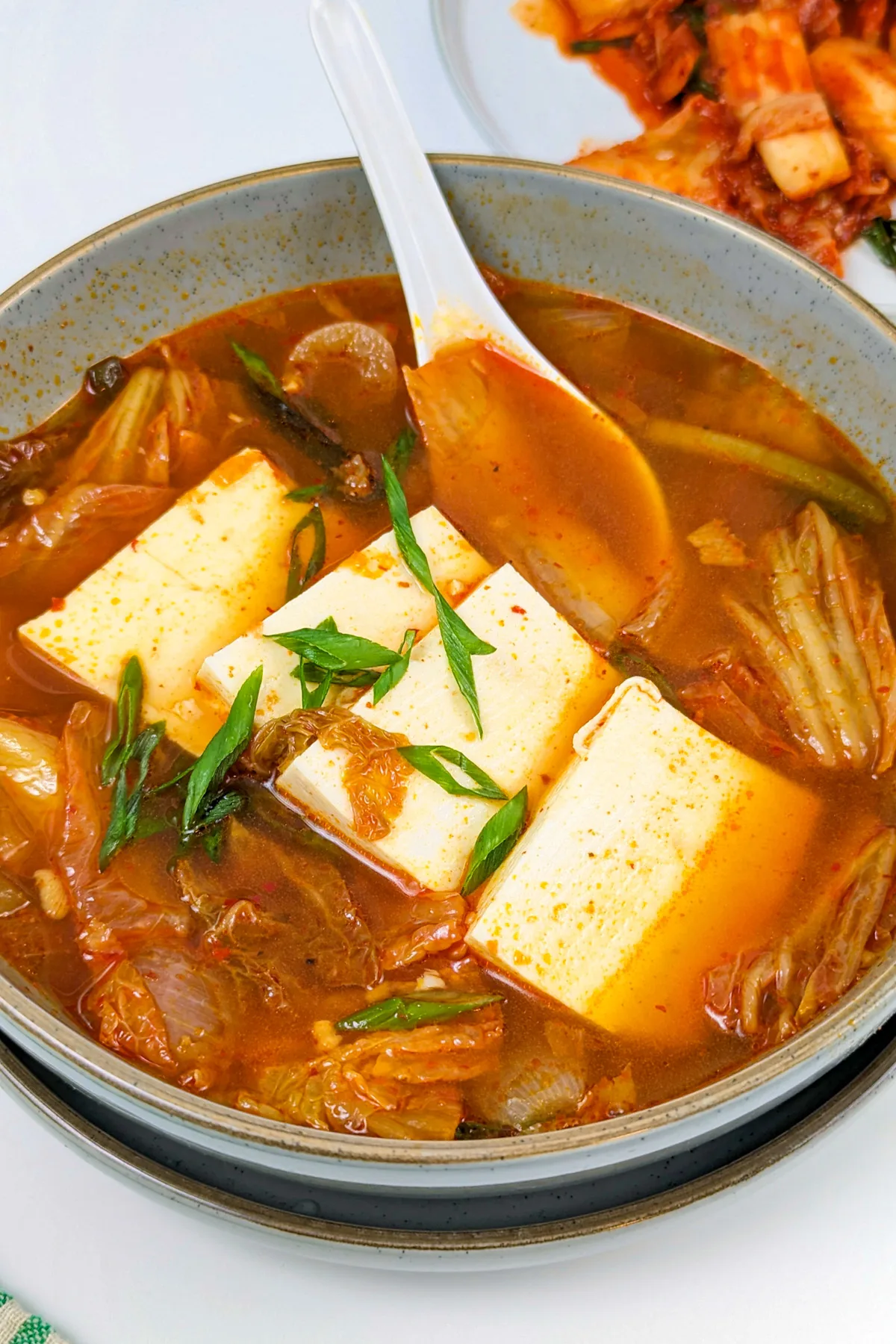Savory, protein-packed bulgogi rice bowls combine sweet and spicy steak, cauliflower rice, and mixed vegetables for an easy one-bowl meal.
For another variation, try my sesame salmon bowl!
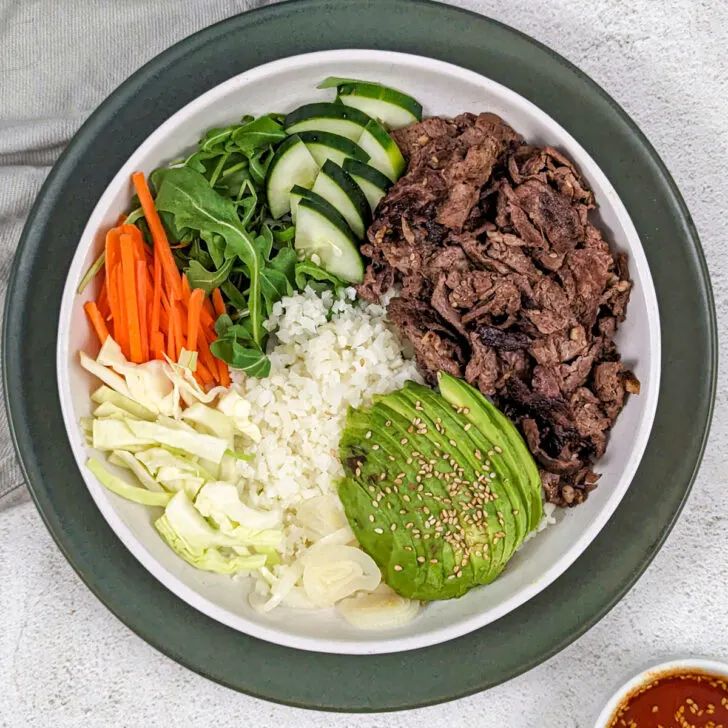
What You Need to Make this Recipe
- Steak: Marinate thinly sliced ribeye steak with minced shallots, garlic cloves, ginger, scallions, soy sauce, monk fruit, and toasted sesame oil. Ribeye is the best option, but you can also use sirloin steak or beef tenderloin. If you live near a Korean market, they often carry pre-cut bulgogi, labeled ‘bulgogi meat,’ in the fridge or freezer section.
- Cauliflower Rice: Prepare homemade cauliflower rice or buy them from the store and cook them according to the package.
- Mixed Greens: I try to eat six cups of vegetables every day, and a bulgogi bowl is a great way to work in bright greens like spinach, microgreens, arugula, or a Spring mix. You can eat them as is or massage them with oil before including them in the bowl.
- Vegetables: Try different vegetables in the bulgogi rice bowls. However, I love the combination of carrots, cucumber, and cabbage. Sometimes, I use my carrot cucumber salad in the bowl for even more flavor.
- Kimchi: Make homemade kimchi or purchase store-bought kimchi, and use any leftovers to make kimchi jjigae. If you don’t have kimchi, try pickled onions.
- Avocado: Thin slices of avocado are the perfect creamy addition to any bowl.
- Homemade Gochujang Dressing: Prepare the dressing by combining warm water with gochujang. Then, stir in the sesame oil, monk fruit, toasted sesame seeds, garlic, and rice wine vinegar.
Additions and Substitutions
- Replace the ribeye with a more affordable cut like sirloin steak or beef tenderloin.
- Instead of the homemade dressing, serve ssamjang on the side, a spicy Korean dipping sauce.
- Use quinoa, white, or brown rice instead of cauliflower rice.
- Instead of mixed greens, try Korean-seasoned spinach called sigeumchi mamul.
How to Make Bulgogi Rice Bowls
The full recipe with measurements is in the recipe card below.
Step 1: Combine garlic, ginger, soy sauce, and monk fruit in a mixing bowl. Add the sesame oil, scallions, Asian pears, and shallots to the bowl and stir to combine. Then, transfer the thinly sliced steak to the bowl. Cover and marinate for at least 30 minutes.
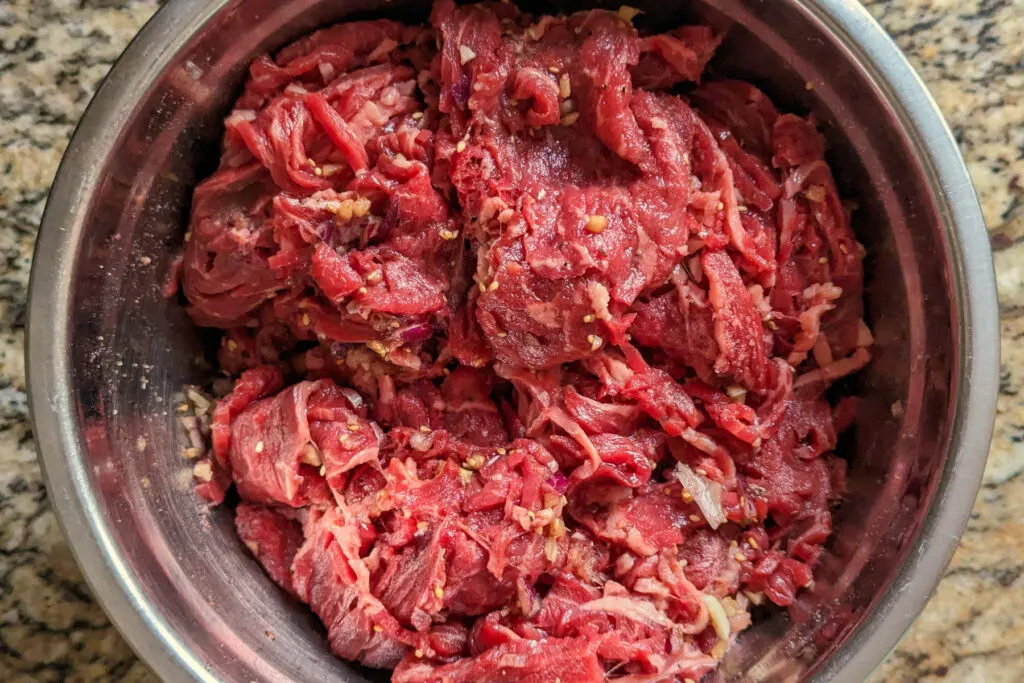
Step 2: Meanwhile, prepare the cauliflower rice and chop the vegetables. Set them aside.
Step 3: Whisk gochujang, warm water, toasted sesame oil, monk fruit, sesame seeds, minced garlic, and rice vinegar in a small bowl.
Step 4: Warm a teaspoon of oil in a large skillet or griddle over medium-high heat. Add the steak in batches and sear until the slices are slightly caramelized and browned.

Step 5: To shallow serving bowls, add cauliflower rice and mixed greens. Top them with avocado slices, mango, carrots, kimchi, cabbage, and pickles, and evenly distribute the beef. Sprinkle the bowls with sesame seeds and green onions to serve.
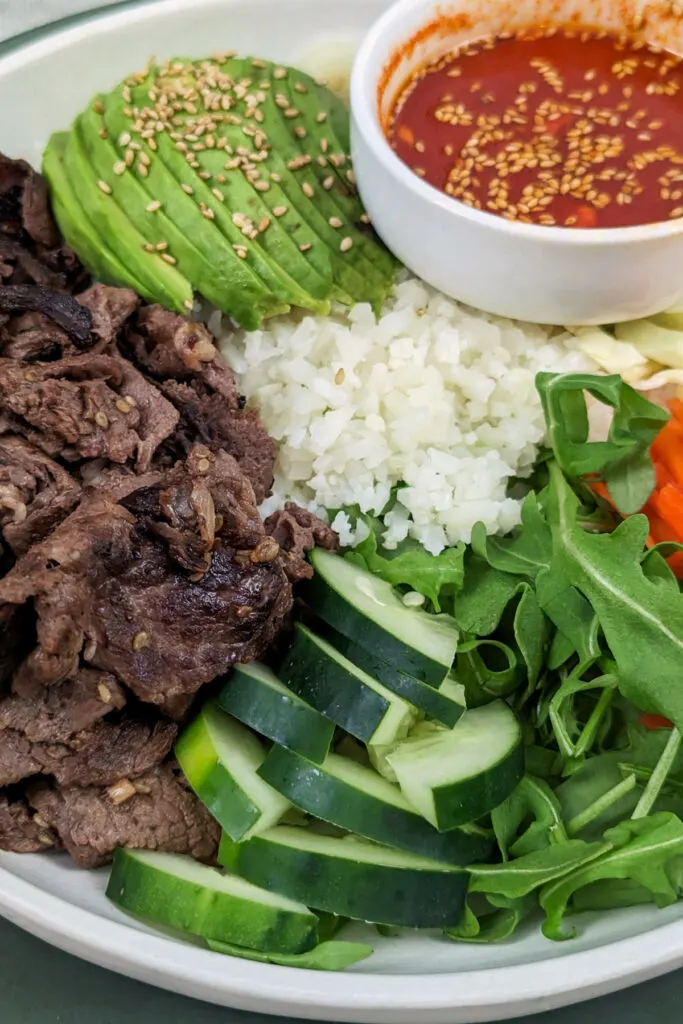
Searching for More Like This?
If you love this recipe, try one of these dinner favorites!

Serving Suggestions
Serve the easy Korean bulgogi rice bowls with side dishes called banchan, which includes dishes like kongnamul muchim (soybean sprouts), sigeumchi mamul (seasoned spinach), or cucumber salad (oi muchim).
What to do With the Leftovers
- Refrigerate – Store the vegetables, steak, and dressing separately in airtight containers for 3-4 days. If you’re preparing this recipe for meal prep, I recommend adding the steak and cauliflower rice to Tupperware and storing the vegetables and dressing in another container.
Frequently Asked Questions
What cut of beef do I use?
Ribeye is ideal for making bulgogi, but you can use sirloin steak or beef tenderloin. Korean markets and Asian grocery stores often sell pre-cut bulgogi. However, I recommend buying the meat and cutting it at home for the best results.
It’s a little extra work, but the quality is worth it! Use a sharpened knife to thinly slice the meat against the grain at an angle. Aim for ⅛-inch slices to ensure the meat cooks evenly. You can prepare bulgogi using tougher cuts of meat like skirt steak or flank steak, but it requires a tenderizer and longer marination.
Whats the best way to cook bulgogi?
The best way to prepare bulgogi is over an open flame, but it is not always the easiest option. Cook the meat on a preheated skillet, griddle, or cast-iron skillet.
The key to preparing bulgogi this way is cooking the steak on a hot pan over medium-high to high heat (depending on your range) until it caramelizes. Work it in batches to sear the meat so you don’t overcrowd the pan. Doing so causes the meat to boil or steam rather than sear.
More Quick Dinner Ideas:
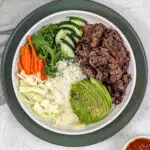
Bulgogi Rice Bowls
- Small Bowl
- 4 cloves garlic, finely minced
- 1 teaspoon ginger, finely minced
- 2 tablespoons soy sauce
- 2 tablespoons golden monk fruit
- 3 tablespoons warm water
- 1 tablespoon toasted sesame oil
- 1 teaspoon black pepper, coarse ground
- 2 scallions, thinly chopped
- 1 Asian pear, thinly sliced
- 1 shallot, thinly sliced
- 1 pound ribeye steak, sliced into ⅛-inch slices
- 2 cups cauliflower rice, cooked according to the package
- 2 cups mixed greens
- 1 cup carrots, julienne
- 1 cup cucumber, sliced
- 1 cup cabbage, shredded
- 1 cup kimchi
- 1 avocado, thinly sliced
- ½ cup gochujang
- ¼ cup warm water
- ¼ toasted sesame oil
- ¼ cup golden monk fruit
- ¼ cup toasted sesame seeds
- 4 cloves garlic, minced
- 4 teaspoons rice wine vinegar
- Combine garlic, ginger, soy sauce, and monk fruit in a mixing bowl. Add the sesame oil, scallions, Asian pears, and shallots to the bowl and stir to combine. Then, transfer the thinly sliced steak to the bowl. Cover and marinate for at least 30 minutes.
- Meanwhile, prepare the cauliflower rice and chop the vegetables. Set them aside.
- Whisk gochujang, warm water, toasted sesame oil, monk fruit, sesame seeds, minced garlic, and rice vinegar in a small bowl.
- Warm a teaspoon of oil in a large skillet or griddle over medium-high heat. Add the steak in batches and sear until the slices are slightly caramelized and browned.
- To shallow serving bowls, add cauliflower rice and mixed greens. Top them with avocado slices, mango, carrots, kimchi, cabbage, and pickles, and evenly distribute the beef. Sprinkle the bowls with sesame seeds and green onions to serve.
- The nutritional information shown is an estimate provided by an online nutrition calculator. It should not be considered a substitute for professional advice.

